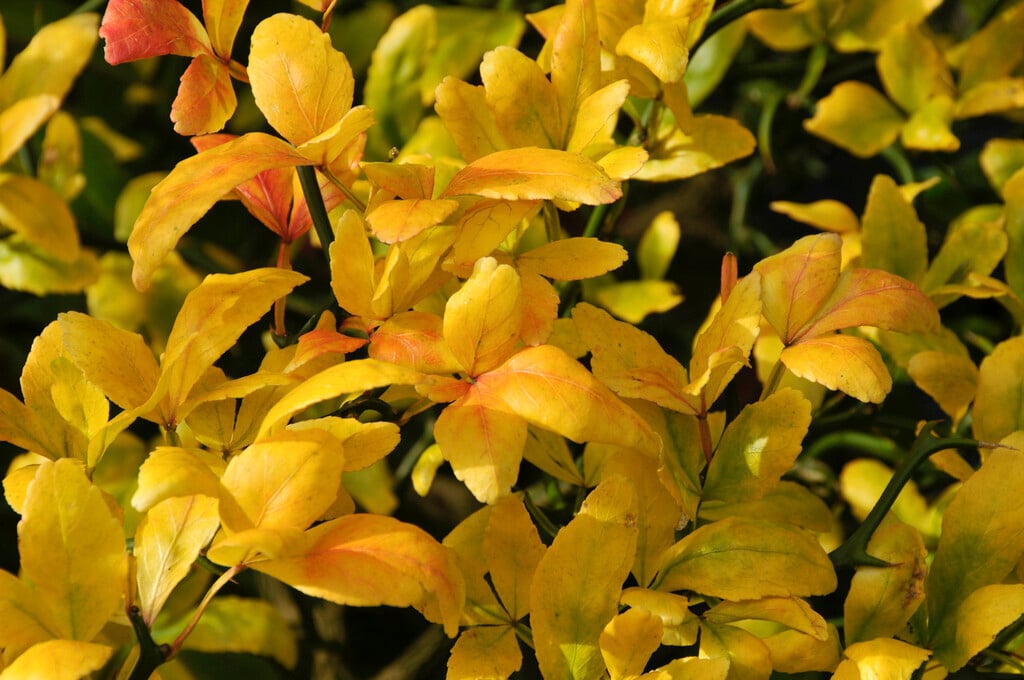Citrus trifoliata 'Flying Dragon'
Japanese bitter orange 'Flying Dragon'
A deciduous shrub reaching around 3m, with trifoliate green leaves that turn yellow in autumn. It is fast-growing and has long stout thorns - making it a suitable hedge plant. Plentiful fragrant white flowers open in spring before the leaves and develop into 5cm lemon-like fruits which remain on the plant after the leaves have fallen. The tangled green stems with curved thorns and yellow fruit look very ornamental in winter

Buy this plant
Size
Ultimate height
2.5–4 metresTime to ultimate height
5–10 yearsUltimate spread
1.5–2.5 metresGrowing conditions
Moisture
Moist but well–drainedpH
Neutral, AcidColour & scent
| Stem | Flower | Foliage | Fruit | |
| Spring | Green | White | Green | |
|---|---|---|---|---|
| Summer | Green | Green | Green | |
| Autumn | Green | Yellow | Yellow | |
| Winter | Green | Yellow |
Position
- Full sun
Aspect
East–facing or North–facing or South–facing or West–facing
Exposure
Sheltered Hardiness
H6Botanical details
- Family
- Rutaceae
- Native to GB / Ireland
- No
- Foliage
- Deciduous
- Habit
- Bushy, Spreading branched
- Potentially harmful
- Fruit harmful to skin with sunlight/skin allergen (lemon and lime-bearing Citrus only). Wear gloves and other protective equipment when handling
- Genus
Citrus are typically evergreen shrubs or trees, frequently spiny, with simple, leathery, aromatic leaves, usually with winged stalks, and often fragrant white or pink-tinged flowers, followed by large, juicy fruits
- Name status
Accepted
How to grow
Cultivation
Grow as a conservatory or greenhouse plant, in a container of peat-free, loam-based potting compost with added grit, in full light, with shade from hot sun. In growth during spring and summer, water freely, and mist daily. Apply fertilisers formulated for citrus, throughout the year, following the manufacturer’s instructions; water sparingly in winter. See citrus cultivation for further information
Propagation
Propagate from seed or by semi-ripe cuttings in summer
Suggested planting locations and garden types
- Architectural
- City and courtyard gardens
- Hedging and screens
Pruning
Prunng group 1 or can be clipped to shape
Pests
Generally pest-free
Diseases
Generally disease-free
Love gardening
Sign up to receive regular gardening tips, inspiration, offers and more
View our Privacy Policy
Get involved
The Royal Horticultural Society is the UK’s leading gardening charity. We aim to enrich everyone’s life through plants, and make the UK a greener and more beautiful place.